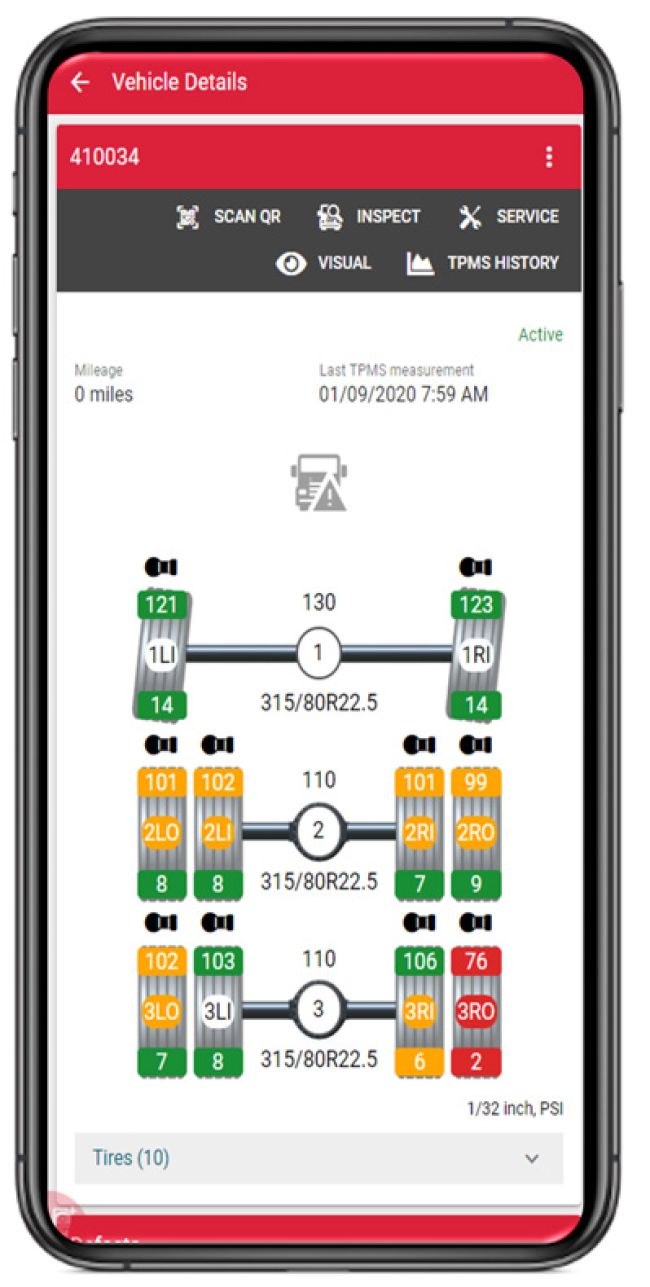
Top Trends to Watch in Commercial Truck Tires
As director of strategic alliances for Element Fleet Management (www.elementfleet.com), Kerry Wenthin often hears concerns about tire performance.
Ask him what he’s hoping to see in terms of innovation, and it comes down to value. “Longer-lasting and cost-conscious products for the high mileage and demanding usage patterns in the light-truck service and delivery segment will always be welcome,” Wenthin said.
He gives credit to tire manufacturers, who he says have “done a great job launching new products and product line extensions to fill gaps and provide additional offerings in high-demand sizes and at various price points.”
But there is always room for improvement, and manufacturers like Bridgestone Americas (www.bridgestoneamericas.com) and The Goodyear Tire & Rubber Co. (www.goodyear.com) continue to innovate. UFP recently spoke with representatives from both companies, who shared emerging trends that they suggest fleet professionals keep an eye on.
Smarter Tires
Tires are getting smarter with new sensing technologies. Bridgestone’s IntelliTire is “a great example of a smart-sensing tool that provides live tire pressure and heat information at every wheel position,” said Brian Goldstine, the company’s president of mobility solutions and fleet management. “We can use that data in combination with advanced and predictive analytics … to provide insights in the form of alerts and customized reports to the driver and/or fleet operator on the condition of their tires, recommendations for maintenance, and the ability to predict and prevent downtime, which might occur with something like an otherwise undetected slow leak.”
The IntelliTire data pairs with Bridgestone’s REACH platform, a cloud-based solution that speeds up roadside assistance requests for commercial fleets.
Goodyear’s products, under the SightLine technology brand, identify critical issues like air leaks and high temperatures while also providing predictive maintenance.
“The first product from Goodyear SightLine’s suite of technologies will be a tire health monitoring solution targeted to cargo van fleets serving the field service, construction and last-mile-delivery industries,” said Steve Rohweder, Goodyear’s vice president of technology development.
Additional products are in development with OEMs and Tier 1 automotive suppliers, he continued. “Goodyear’s goal is to have some form of tire intelligence in all new products by 2027.”
Mobility Solutions
Both major tire manufacturers are also investing in mobility solutions. At Goodyear, that means a non-pneumatic tire for use in autonomous shuttles. The product is currently being used in Jacksonville, Florida, and should deliver information “from autonomous shuttle passengers, including opinions on ride comfort, noise and other experiential data,” Rohweder said.
Bridgestone is looking at data from autonomous vehicles as well, investing in Kodiak Robotics, a long-haul trucking company that upfits long-haul diesel trucks with Level 4 autonomous technologies. “There is a lot to learn from how autonomous vehicles gather and process information and how that relates to both tire design and the role of the tire in a highly automated fleet system,” Goldstine said. “We see opportunities in terms of how data coming from more advanced smart-sensing tires can help optimize automated vehicle performance, including steering and braking, based on the condition of the tire and the road.”
In addition, Bridgestone is exploring air-free commercial truck tires, primarily in long-haul trailer applications “where we see the greatest opportunity in the near term,” according to Goldstine.
New Tire Life and New Alliances
Bridgestone currently offers the Bandag MaxTread line, which “is designed to deliver reliability comparable to new tires,” Goldstine said. The Bandag retread is a standalone, single-unit tire solution rather than the traditional cap and casing. The latest innovation, the MaxTread FuelTech Drive, is engineered to improve fuel efficiency.
Lastly, both Bridgestone and Goodyear have been in heavy growth mode, with Goodyear completing its acquisition of Cooper Tires and Bridgestone picking up Azuga, a fleet management platform. The two companies said these acquisitions will allow for greater investments, particularly those of interest to fleets.
About the Author: Sandy Smith is a freelance writer and editor based in Nashville, Tennessee.
*****
Aligning with Environmental Goals
New tire-related developments continue to be rolled out, and product manufacturers are working in key areas that align with broader environmental goals.
At The Goodyear Tire & Rubber Co., much of the development is focused on the use of soybean oil to enhance tire performance. Steve Rohweder, Goodyear’s vice president of technology development, said scientists and engineers – with support from the United Soybean Board – have “developed a tread compound in which soybean oil replaces 100% of petroleum-derived oil. Soybean oil helps keep a tire’s rubber compound pliable in changing temperatures, a key performance achievement to maintaining and enhancing vehicle grip on roadways.” This innovation, he explained, helps the company work toward its goal of fully replacing petroleum-derived oils by 2040.
At Bridgestone Americas, the work is focused on tires for electrified trucks, according to Brian Goldstine, the company’s president of mobility solutions and fleet management. While he did not go into great detail, he did point to this as “an important area of learning.”
In general, Bridgestone’s sustainability goals are “a huge area of focus for every aspect of our business,” Goldstine noted.
- Who is Your Customer?
- Planning Your Fleet’s Transition to EVs
- What’s New in Lifting Equipment for Utility Fleets in 2021
- Top Trends to Watch in Commercial Truck Tires
- What’s New in All-Terrain Vehicles for Utility Fleets
- Best Practices for Training Utility Fleet Drivers to Cut Engine Idling
- How to Retain Technicians in a Tight Labor Market
- How a Major Utility Fleet Moved to Predictive Maintenance
- Making the Best of the Way Things Turn Out

